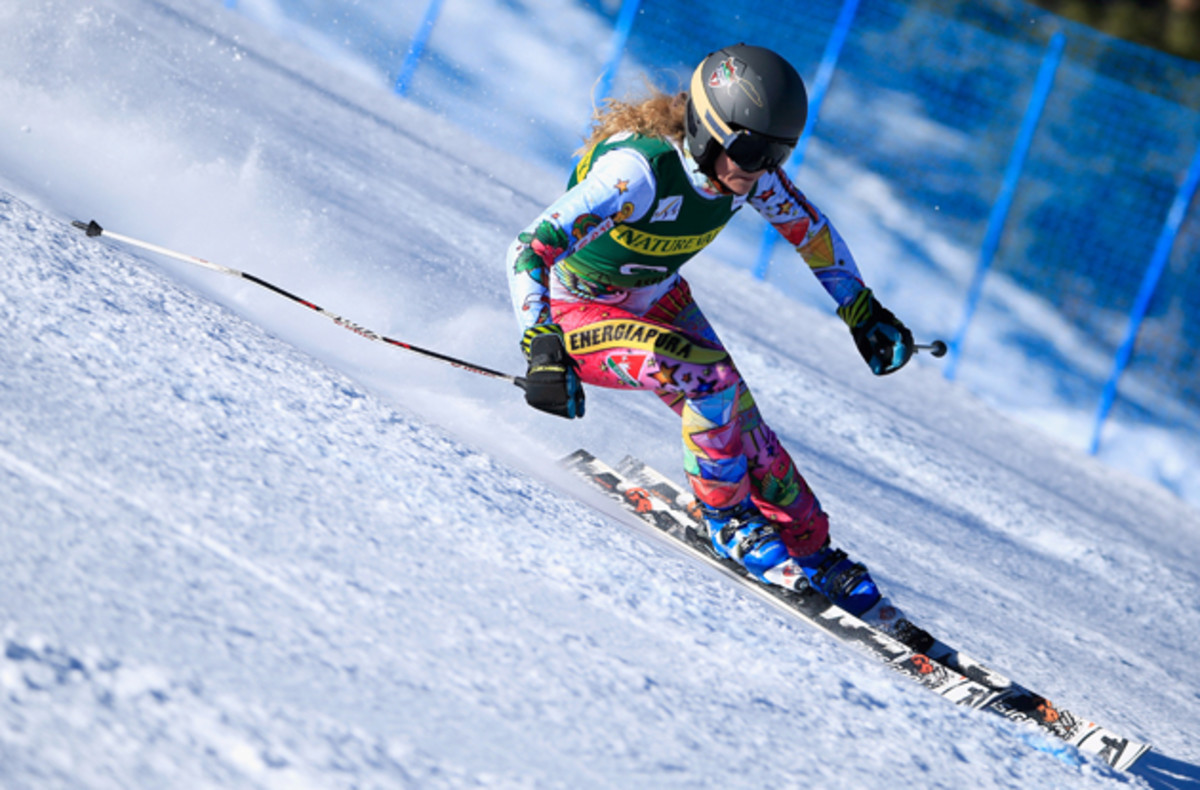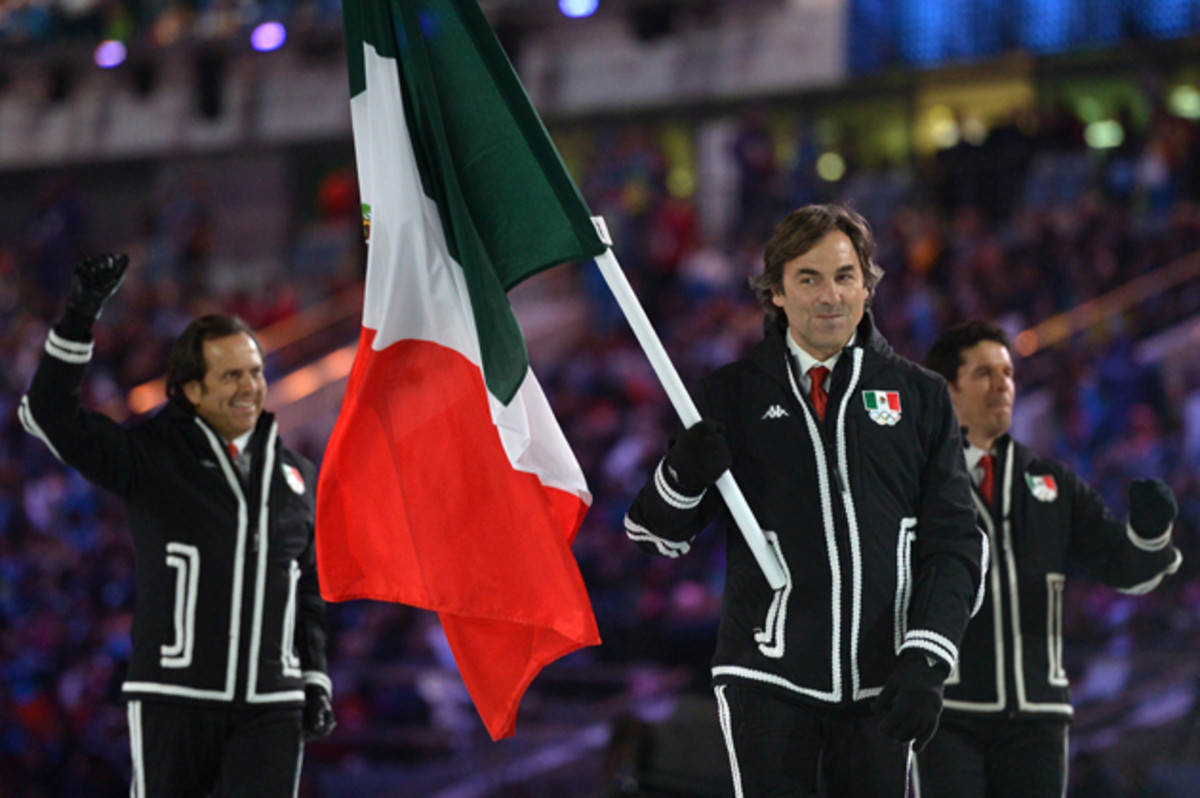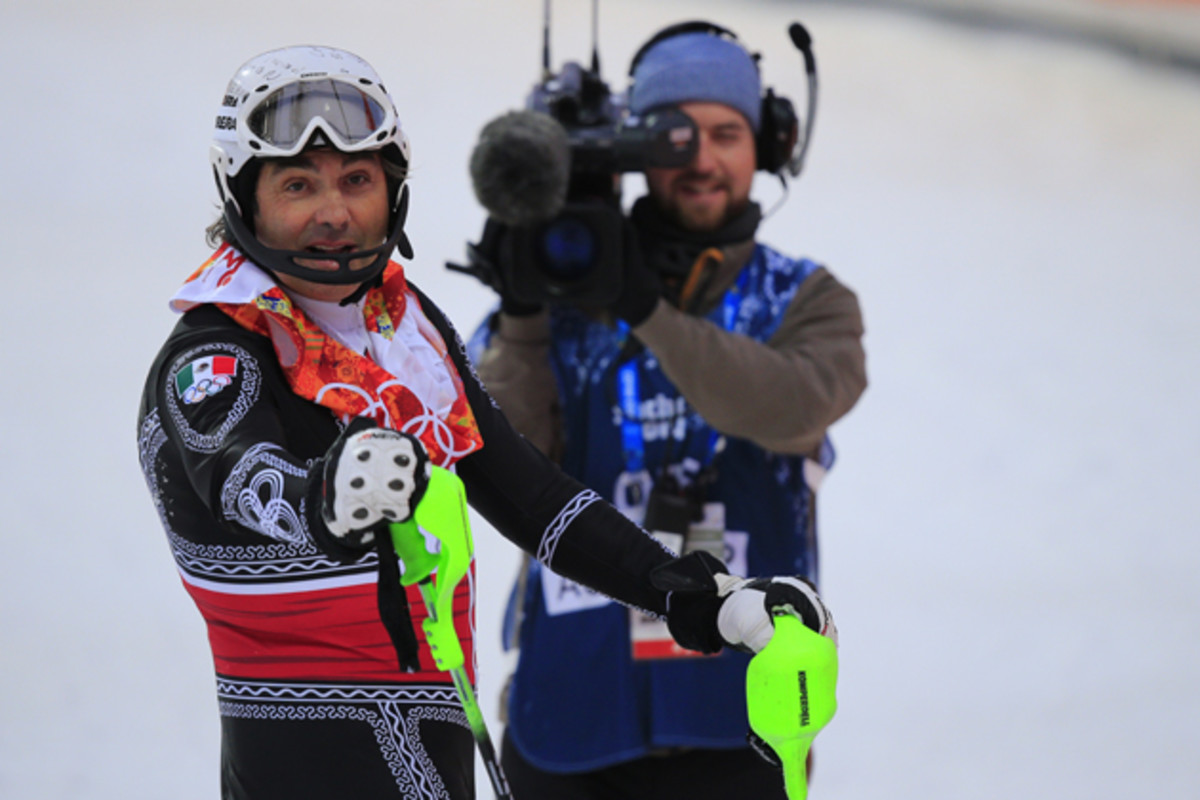Mariachi Man: Prince Hubertus and the Mexican ski team he helped create

Perched on the slopes of Vail Resort’s Golden Peak, Prince Hubertus von Hohenlohe felt nauseous. Bent over, leaning on his poles, the Colorado altitude and early February sun were taking their toll on the 55-year-old godfather of Mexican ski racing. His style, though, remained fully intact.
Decked out in a white and red mariachi-themed speed suit—complete with printed on bow tie—von Hohenlohe was technically there to compete at the 2015 Alpine World Ski Championships. Having come to the biannual mini-Olympics of ski racing fifteen times before and never having finished within five seconds of the winner, von Hohenlohe had no illusion of taking home a medal. He is, however, a perennial contender for the unofficial spirit award.
The adventure began more than thirty years ago when the young skier was looking for ways to race on a bigger stage. A prince by German descent who resides predominantly in Europe, von Hohenlohe quickly turned to his birth country, Mexico, because he knew he didn’t stand a chance of making a mainstream European team.
“I went to Mexico, and said ‘Hi, I'm Hubertus, I want to ski in Sarajevo’,” von Hohenlohe explains, in reference to the 1984 Olympics. By that point he had set up a Mexican ski federation and was representing the country at international events. To get to the Olympics though, he went through Mario Vázquez Raña, a Mexican businessman and powerful member of the International Olympic Committee. It wasn’t as hard as von Hohenlohe expected. A few phone calls later, the prince found himself competing in Sarajevo. His best finish was 26th in the slalom.
[daily_cut]In the decades since, von Hohenlohe has used a flare and vibrancy rarely seen on the World Cup ski circuit to build himself, and Mexico, into the sport's most colorful brand. Along the the way, he’s fulfilled his childhood dream of racing against the legendary Austrian downhill racer Franz Klammer (von Hohenlohe lost), met his longtime time girlfriend, Simona Gandolfi, at the 1994 Olympics in Lillehammer, Norway, and set records for both World Championship trips and the longest span of Olympic appearances.
It wasn’t until recently, however, that the eccentric Mexican moved from a fixture of the skiing world to a more recognizable public figure.
Von Hohenlohe’s star is inextricably linked to the race suits he’s wears. At the 2010 Vancouver Games, he donned a pistalero inspired design, with revolvers as the main theme. The joke was that his only hope at landing on the podium would be to shoot the other competitors. In Sochi, von Hohenlohe’s profile skyrocketed even further on the back of a flashy, black, mariachi suit. He was quickly dubbed "the most interesting man in the world." And, this year, he finally has a female counterpart.
While von Hohenlohe affectionately calls her his “backup singer,” Sarah Schleper de Gaxiola is anything but. When she joined, the Mexican team doubled in size and much more than that in talent.

was a four-time Olympian and World Cup slalom winner for the United States before retiring in 2011. She subsequently acquired Mexican citizenship through her husband and officially switched allegiances last May at age 35.
“I'm not sure what the community is thinking at this point,” she wonders, before stressing that she remains fiercely loyal to both Mexico and the US. The move, she says, was aimed at prolonging her career and giving back to the sport by helping foster a new crop of Mexican skiers. It hasn’t been easy though.
Behind the Trick: Sage Kotsenburg on his signature move, the Holy Crail
As an American racer, Schleper had an army of coaches, technicians, trainers and support staff backed by a multi-million dollar budget. Now, her brother Hunter comes out to coach when he can get off work, her ski technician Clint is a fellow Vail native doing the work virtually pro bono, and her mother-in-law Alejandra helps manage the press. While she is clearly proud of the rag-tag bunch, there’s also a twinge of concern about how it all stays afloat.
“There's no money, no dinero, to spend on ski racing,” notes the the mother of two, who has already invested roughly $20,000 of her own money in the endeavor.
Given the financial constraints and her age, Schleper may not be skiing at the level she once did. But neither her or her fans seem deterred. Walking around Vail, the mountain town where she still lives with her family, Schleper is a local celebrity of sorts. Stopping constantly to talk to lift attendants, coaches and passers by, she’s gotten to know many of them on a first-name basis. If possible though, the charismatic von Hohenlohe finds himself with even more well-wishers.

Team Mexico supporters throng the bottom of the mountain, asking for stickers or pictures with Sarah or El Príncipe. They rarely say no, and for a lucky few von Hohenlohe even breaks out in song. One encounter featured an impromptu, yet fitting, rendition of "Living in a Hall of Fame," by The Scripts.
It’s little wonder that Mexico drew much of the outsized attention at the World Championships. Vail is, after all, the closest Mexico ever gets to a "home race" and von Hohenlohe’s appetite for the limelight is insatiable. But they were not the only athletes from unexpected counties. Seventy nations took part in Colorado, including the likes of Lebanon, Taipei, and India.
Teton Gravity Research: Learning the basics of avalanche safety
”[It’s] very important to demonstrate that skiing and snow sports can take place all over the world,” says Sarah Lewis, the Secretary General for the international ski federation, FIS.
Small country ski racing is arguably a bit contrived. Even when participants meet the passport requirement, their connection to the flag they fly can be tenuous. Von Hohenlohe, for one, doesn't take the idea, or himself, too seriously. To him, it’s the community and atmosphere that matter most. As he puts it, “there's a World Cup circus, and you need different numbers.”
Von Hohenlohe—whose day jobs variously include photography, pop music, and television appearances—loves being part of the circus. And, after the lifts shut down, he also revels in the après ski lifestyle. “I'm a bit of a whore,” he says of his party-hopping habits, despite not drinking alcohol himself. “When the Swiss win, I go to the Swiss house. When the Austrians win, I go to the Austrian house, and when the Americans win, I go to the American house. Just to suck in the vibe of winning.”
According to von Hohenlohe, it’s becoming harder to keep the tradition of small nation racing, and thus the diversity of the sport, alive. He cites changes to ski rules and the addition of qualifying events that limit the size of the field. He describes the scene as increasingly “an opera where a couple people sing and the rest are just standing there.”

In Mexico’s case, though, the team both steals the show while promoting loftier aims than all the hoopla might suggest. Von Hohenlohe and Schleper are passionate about bringing young people into the sport and, with limited resources, continue to develop a Mexican team that emerged more or less out of thin air into a stalwart.
There are glimmers of hope. In late January, for example, 17-year-old Mexican racer Rodolfo Dickson became the first Mexican to win an international race—taking a Super-G in upstate New York. Born in Mexico and adopted to Canada, he appears the most likely heir to von Hohenlohe’s Mexican skiing throne. The prince says that he will likely step aside after the 2017 World Championships in St. Moritz, Switzerland.
Schleper, however, hopes to keep competing indefinitely and is excited by the possibility of new talent. “I want to have teammates in Korea. That’s the goal,” she says, referring to the 2018 Olympic Winter Games in Pyeongchang. And she’s been coaching a number of young girls that she hopes can follow in her footsteps. “I love promoting the sport and building up younger athletes.”
- MORE EDGE: Sam vs. the Volcano: Cossman's journey down
That said, she’s not necessarily pushing her own children—both named after ski racers—in any particular athletic direction. In the event they do go the skiing route, though, she knows who she wants them to race for: “I would love from them to be Mexicans,” she says without hesitation. “I think it will add a flare and a story to the athlete that they'll be.”
There’s no debating that the legacy von Hohenlohe began three decades ago is alive and set to rub off on the next generation—at least he hopes it will.
“It's all about fun and creativity out there on the course,” von Hohenlohe says of his philosophy. “In the end, [that] is what makes life a little more spicy.”
